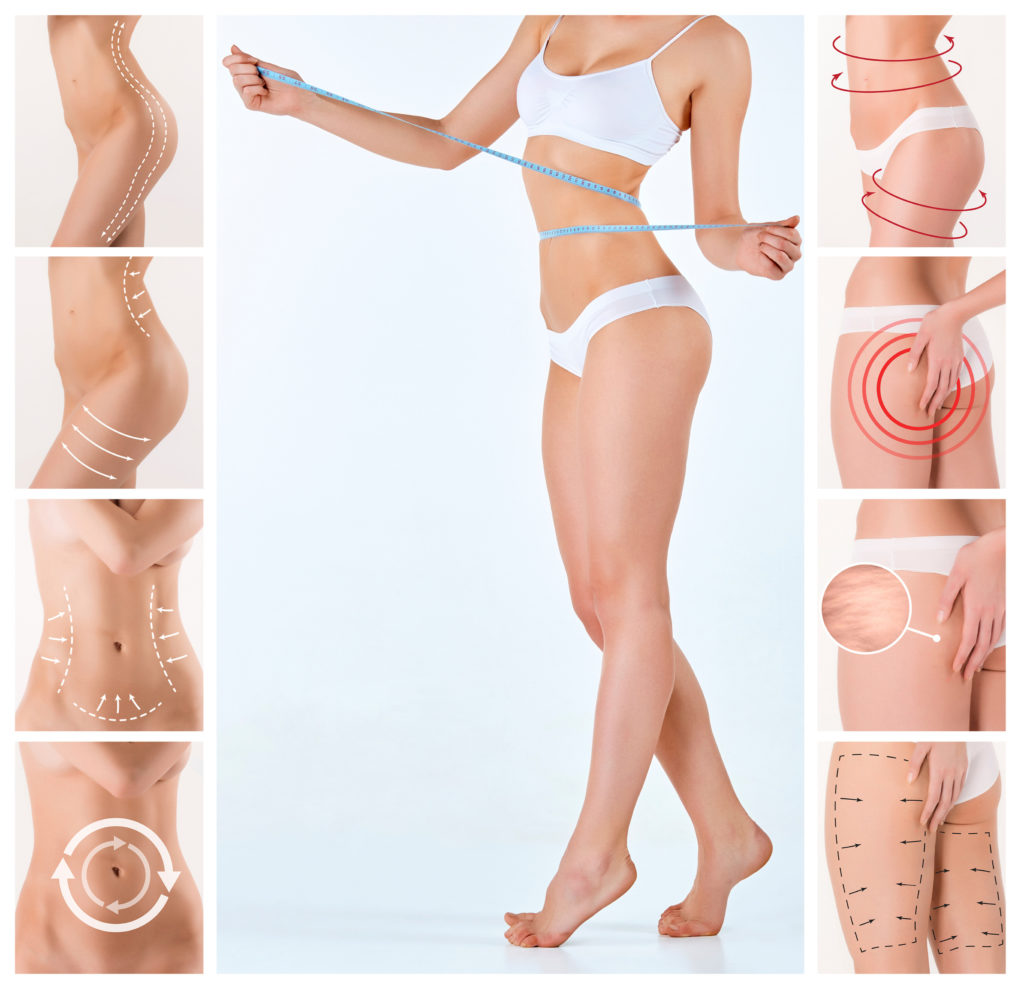La liposucción, también conocida como lipoescultura, es una intervención quirúrgica que llevamos a cabo en Clínica Tebon, Clínica de Cirugía Estética y Plástica en Málaga, que consiste en la aspiración a través de unas pequeñas incisiones de los depósitos de grasa localizados bajo la piel. La liposucción está enfocada a corregir algunas regiones corporales en las cuales persisten acúmulos grasos habitualmente rebeldes a las dietas y ejercicio, por tanto, es importante destacar que la liposucción no es un tratamiento de la obesidad Con esta técnica se puede aspirar grasa de distintas partes del cuerpo: muslos, caderas, tobillos, rodillas, brazos, abdomen, papada… En algunas ocasiones se complementa con otras intervenciones (abdominoplastia, lifting de muslos etc.).
Si estás interesado/a contacta con nosotros.

Antes de la cirugía
En la primera consulta, el cirujano plástico evaluará su estado general, los acúmulos de grasa existentes y la firmeza y elasticidad de la piel. Se le explicarán otros métodos alternativos para mejorar el contorno corporal, como por ejemplo la abdominoplastia, y se discutirán las opciones o la combinación de procedimientos que sean mejor para usted. No olvide contar si ha tenido algún cambio de peso importante. Además debe contar si es fumador o toma alguna medicación. Debe exponer sus expectativas de manera sincera, para que el cirujano plástico también lo sea y le muestre las alternativas disponibles para su problema, con los riesgos y limitaciones de cada una de ellas.
Durante la cirugía
La liposucción se realiza en quirófano, dentro de una clínica u hospital. Muchas veces se realiza en régimen ambulante, sin que sea necesario el ingreso. En liposucciones muy extensas puede ser necesario un ingreso de 2 o más días.
Por lo general la anestesia dependerá del tamaño de la zona que hay intervenir, pudiendo ser anestesia local y sedación para zonas pequeñas, epidural si es solo en piernas o anestesia general si es una liposucción más amplia. Una liposucción suele durar entre 1 y 2 horas, pero el tiempo es variable dependiendo del área y la cantidad.
Inicialmente, se realiza una pequeña incisión de unos milímetros, suficiente para poder introducir un tubo hueco denominado cánula de liposucción. El otro extremo de esta cánula se une a una máquina que produce vacío y aspira la grasa. A veces es necesario realizar incisiones adicionales para eliminar todos los depósitos de grasa.
Después de la cirugía
Tras la cirugía se colocará una faja, medias o vendaje elástico sobre la zona tratada para controlar el sangrado y la hinchazón y también para ayudar a la piel a adaptarse al nuevo contorno. Suele ser necesario llevarlo durante 3 o 4 semanas. Las áreas liposuccionadas probablemente estarán inflamadas y con hematomas y se puede tener una sensación de quemazón. El dolor puede aliviarse con la medicación prescrita por su cirujano plástico. No espere tener un aspecto óptimo justo después de la cirugía; además se encontrará más pesada debido al exceso de fluidos que se administran. Puede perder sensibilidad en la zona tratada; no se preocupe, se recuperará con el tiempo.
La curación es un proceso gradual. Los puntos de las pequeñas incisiones serán retirados entre los 5 y 10 días. Su cirujano plástico le indicará que comience a caminar tan pronto como le sea posible, pero no realice actividades intensas durante 2 a 4 semanas. Podrá volver a trabajar en una semana desde la intervención, dependiendo del tamaño de la liposucción. El hinchazón y los hematomas habitualmente desaparecerán en el primer o segundo mes tras la liposucción; sin embargo, una mínima inflamación puede mantenerse durante 6 o más meses.
Preguntas Frecuentes
Para someterse a una liposucción, los candidatos ideales son aquellas personas que poseen un peso relativamente normal pero que tienen acúmulos de grasa en áreas localizadas. Si usted posee una estabilidad psicológica y un estado general de salud bueno, y además, es realista en sus expectativas, será un buen candidato. Lo más importante para obtener un contorno final óptimo es poseer un piel firme y elástica (la piel que “cuelga” no se redistribuirá sobre el nuevo contorno corporal y podría requerir algún procedimiento quirúrgico adicional para eliminar el exceso de piel). La liposucción no está recomendada si tiene mala circulación en la zona a tratar o si ha tenido una cirugía reciente en esa zona, o si se padecen problemas cardiacos o respiratorios. Es importante saber también que la liposucción no mejora la celulitis.
La liposucción es una técnica segura, siempre y cuando se seleccione bien al paciente, esta sea realizada por un cirujano plástico cualificado y el quirófano esté bien equipado. Sin embargo, se pueden producir complicaciones, sobre todo cuando se extraen grandes cantidades de grasa en una sola vez. Otra complicación infrecuente, aunque posible, es la acumulación de líquido. Aunque las complicaciones serias son muy raras, la infección y la pérdida excesiva de líquidos pueden provocar una situación grave. Las cicatrices de la liposucción son mínimas y situadas estratégicamente para que queden escondidas. Sin embargo, a veces pueden presentarse algunos problemas estéticos, independientemente de la experiencia del cirujano plástico, estos pueden ser ondulaciones sobre la piel tratada, cambios de coloración que pueden ser permanentes si nos exponemos al sol.
Los resultados pueden ser permanentes, siempre y cuando mantenga una dieta adecuada y practique ejercicio periódicamente. Si usted gana peso lo hará de manera más homogénea y no sólo en los depósitos localizados de grasa. La mayoría de los pacientes están muy satisfechos con los resultados de su liposucción, siempre y cuando sus expectativas de futuro sean realistas, se encontrará feliz con su nueva silueta, podrán utilizar ropa más variada y están más satisfechos con su cuerpo.
En comparación con otras intervenciones estéticas, tras una liposucción no es necesario guardar reposo, al contrario, se recomienda volver a la actividad habitual para acelerar la recuperación. Lo que si indicará su cirujano como importante, es usar adecuadamente las prendas de compresión durante un tiempo.
